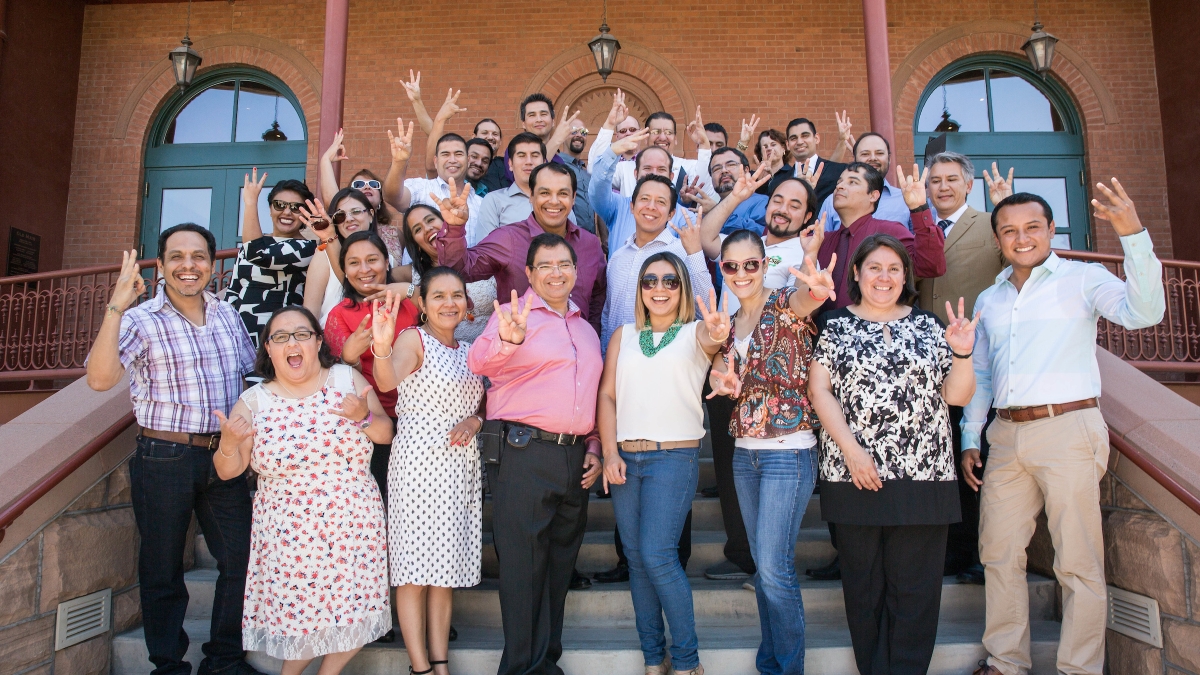The graduation of 29 engineering, biology and mathematics professors from a six-week course here Wednesday signals the successful international collaboration between Arizona State University and the Tecnológico Nacional de México.
Led by ASU’s Global Launch office, the course sharpens research writing and presentation skills, and it marks the first time higher-education instructors from Mexico have studied at ASU as part of the TecNM collaboration.
“It was an incredible experience,” said student Aristarco Aguas Atlahua, a biologist from the Instituto Tecnológico Superior de Zongolica in Mexico’s state of Veracruz. “Going through this will help me help my students and allow me to share what I learned here with my colleagues in Mexico.”
Aguas Atlahua teaches in a university of about 2,500 students, of which 70 percent are indigenous and speak náhuatl — an Aztec dialect. He volunteered for the ASU program to improve his English so he can better guide students in publishing scientific articles, which although written in Spanish require an English abstract. He also believes the experience will help him promote a multicultural environment at his university.
“We learned new teaching strategies … and how to resolve problems through different methods,” said Aguas Atlahua. “The instructors here are excellent and at the forefront of technology.”
The professors came from all over Mexico, providing an added benefit to the course beyond the class curriculum: networking.
“It is very interesting because it was the first time that I’ve seen different teachers from different states in Mexico,” said Alfonso Cisneros Campos, an engineering professor from Hermosillo, Sonora. “I had the opportunity collaborate with each one of them in a very particular way.”
Cisneros Campos said he couldn’t help to be excited on his first day at ASU after meeting his colleagues from various backgrounds, such as program engineers, mechanical engineers and various other specialties. He became curious.
“I wanted to know a little bit more,” he said.
The intent of the program is to improve overall skills to facilitate publishing work in English and also present at international conferences, said Claire McLaughlin, Global Launch lead international educator. The students attended presentations on how to communicate their research as well as how to introduce themselves and give a three-minute pitch on their research.
The course culminated with the students giving multidisciplinary team presentations of a problem in Mexico they researched while here and providing possible solutions. Each presentation featured a poster illustration of the topic, and each student briefed a portion of it.
During their time here, the professors had the opportunity to visit the ASU Decision Theater, the Marston Theater, the Engineering Projects in Community Service and engineering labs at both Tempe and Polytechnic campuses, said McLaughlin. They also visited the Solar Lab at the ASU Research Park and the Biodesign Institute and attended a LightWorks presentation.
“This is our first time hosting TecNM,” said McLaughlin. “But hopefully not the last.”
More Science and technology

ASU water polo player defends the goal — and our data
Marie Rudasics is the last line of defense.Six players advance across the pool with a single objective in mind: making sure that…

Diagnosing data corruption
You are in your doctor’s office for your annual physical and you notice the change. This year, your doctor no longer has your…
Large-scale study reveals true impact of ASU VR lab on science education
Students at Arizona State University love the Dreamscape Learn virtual reality biology experiences, and the intense engagement it…


